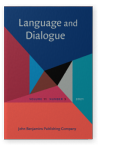Vol. 11:3 (2021) ► pp.355–378
Communicating communication
The recursive expertise of communication experts
Recent years saw the rise of communication experts, operating in various contexts and enjoying high levels of popularity. The paper examines this expertise asking: What kind of expertise do communication experts hold? What is the communication they are expert in? And what can scholars of communication learn from experts who practice it professionally? Based on in-depth interviews with communication experts, we analyze what they believe are the components of their expertise and the reliance of this expertise on communication to communicate itself. We examine this recursive nature of expertise in communication by highlighting the relationship between these experts and laypeople, offering an explanation for the popularity of the former specifically in the era of “the death of expertise”.
Article outline
- 1.Introduction
- 2.On expertise
- 3.Methodology
- 4.Communicating communication
- 4.1Professional knowledge
- 4.2Personal experience
- 4.3Personal traits
- 4.4Personal biography
- 5.Discussion: Recursivity and communication expertise
- Acknowledgements
- Notes
-
References
